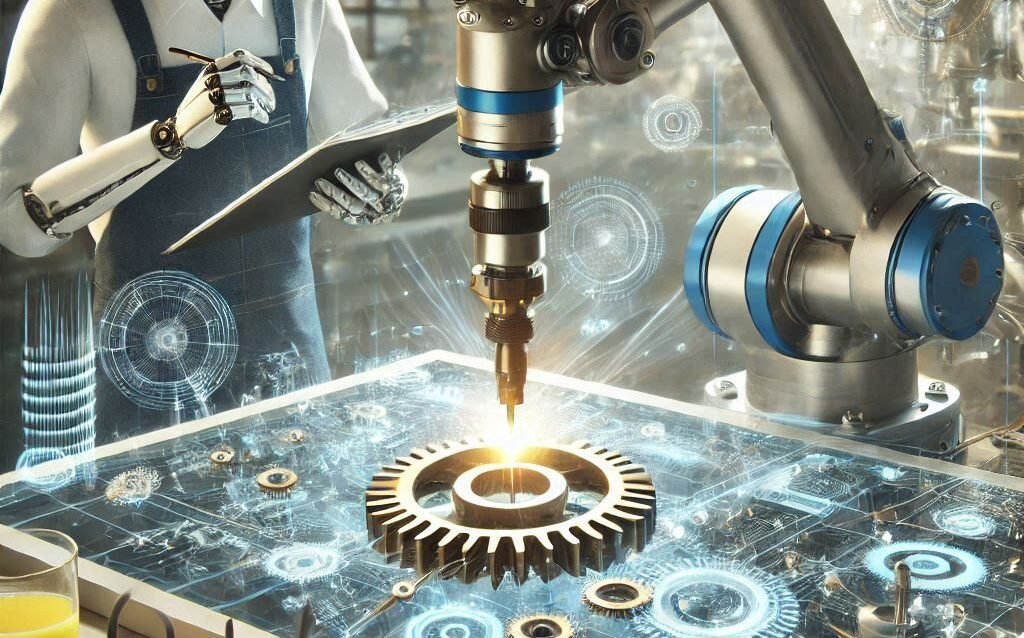Introduction to Working Robots
Working robots, often referred to as industrial robots, have become increasingly integral to the manufacturing and production processes within various industries. Their evolution began in the mid-20th century, primarily focusing on enhancing human capabilities by automating repetitive tasks. Over the years, advancements in technology, particularly in artificial intelligence, machine learning, and sensory systems, have propelled working robots into a new era, characterized by remarkable precision and efficiency. These robots are now capable of not only performing monotonous tasks but also adapting to complex production requirements.
The growing demand for efficiency and automation in the industrial sector can be attributed to several factors. As the global marketplace becomes more competitive, manufacturers are challenged to optimize their operations while maintaining quality. Working robots enable significant enhancements in productivity, as they can operate continuously without the limitations faced by human workers, such as fatigue and downtime. Furthermore, the integration of robotics in production lines allows for the reallocation of human labor to more intricate tasks that require creativity and critical thinking, thereby elevating the overall operational capabilities of industries.
According to recent statistics, the adoption of industrial robots has surged dramatically. In 2020, the International Federation of Robotics reported that global sales reached approximately 384,000 units, with projections suggesting a steady growth trajectory. This trend is underscored by the increasing reliance on automation across sectors, including automotive, electronics, and consumer goods, which further signifies the transformational role that working robots play in modern industry. As businesses strive for greater efficiency, the significance of understanding the capabilities and benefits of working robots continues to escalate, establishing a foundation for their impact on the industrial landscape.
(Purchase today by clicking on the image)
Benefits of Implementing Working Robots
The integration of working robots into the industrial sector presents numerous advantages that significantly enhance operational efficiency. One of the most prominent benefits is the substantial increase in productivity. Robots are capable of executing tasks at a much faster rate than human workers, particularly in repetitive operations such as assembly line manufacturing. This efficiency not only expedites production cycles but also enables businesses to meet growing consumer demands without compromising quality.
In addition to heightened productivity, working robots contribute to reduced operational costs. Automation minimizes the need for extensive labor, thereby decreasing payroll expenditures. Moreover, robots do not require breaks, vacation time, or healthcare benefits, further lowering the overhead costs associated with human employees. Companies that have integrated robotic systems report significant savings that can be redirected towards innovation and expansion efforts.
Safety is another critical area where working robots excel. Industrial environments can pose substantial hazards, including exposure to toxic substances, heavy machinery, and extreme temperatures. Robots are adept at performing tasks in these hazardous conditions, thereby safeguarding human workers from potential injuries. For example, in automotive manufacturing, robots can undertake tasks involving welding and painting, which often involve dangerous fumes and extreme heat, allowing human operators to focus on more complex responsibilities that require cognitive skills.
Real-world implementations underscore these benefits effectively. Companies such as Amazon and Tesla have harnessed the power of robotics to streamline their operations. Amazon’s warehouses employ robots to manage inventory and move products efficiently, demonstrating a significant increase in throughput. Similarly, Tesla’s use of working robots in their production lines has contributed to a rapid scaling of electric vehicle manufacturing. Through these examples, it is evident that the strategic deployment of working robots not only enhances productivity but also improves overall workplace safety and reduces operational costs in the industrial sector.
Challenges and Concerns of Replacing Humans with Robots
The increasing adoption of robots in the industrial sector certainly offers numerous advantages, including improved efficiency and productivity. However, it raises significant challenges and concerns, particularly regarding the potential displacement of human workers. As robots take on more complex tasks traditionally performed by humans, there is a fear that job loss will become widespread, leading to economic instability for affected individuals and communities.
Moreover, the rapid integration of robotic technology can exacerbate the skill gap in the workforce, as many workers may not possess the necessary technical skills to operate or maintain these advanced machines. The demand for skilled labor is expected to rise, while those lacking relevant training may find themselves increasingly vulnerable to unemployment. Consequently, companies must prioritize workforce retraining and development programs, ensuring that current employees have opportunities to acquire new competencies that align with the evolving workplace landscape.
Ethical implications also arise from the use of robots as labor substitutes. Questions surrounding accountability in case of accidents or malfunctions emerge, as it becomes essential to delineate the responsibilities between human oversight and robotic autonomy. Furthermore, the replacement of human workers with robots raises moral considerations about the inherent value of work and the role of humans in society. The potential dehumanization of labor, as well as the impact on the worker’s sense of purpose, cannot be overlooked.
To address these challenges, industries must embrace a holistic approach that integrates robotic technology without disregarding the human element. By actively investing in retraining initiatives, creating a conducive environment for employee adaptation, and fostering ethical discussions, businesses can ensure that both robots and humans can coexist harmoniously in the industrial sector, driving innovation while safeguarding the workforce.
The Future of Robotics in Industry
The trajectory of robotics in the industrial sector appears promising, marked by rapid advancements and increased integration into various operational processes. As industries continue to evolve, the role of robots is expected to expand, leveraging cutting-edge technologies such as artificial intelligence (AI) and machine learning. These advancements will not only enhance the capabilities of robots but also enable them to perform more complex tasks with improved precision and efficiency.
Anticipated technological progress in robotics includes the development of more sophisticated sensors and actuators, which will enhance the interaction between machines and their environment. This innovation will facilitate greater adaptability in dynamic industrial settings, where robots will be able to adjust their operations based on real-time data. Additionally, AI integration will empower robots to learn from experience, enabling them to improve their performance in assembling products, monitoring systems, and even performing predictive maintenance.
The evolving relationship between humans and robots in the workplace will also play a crucial role in shaping the future of the industrial sector. As robots become more capable and integrated into everyday operations, they will serve not only as tools but as collaborative partners. This shift necessitates a reevaluation of workforce training and development programs, ensuring that human employees possess the skills to work alongside advanced robotic systems effectively.
Industry experts predict that successful organizations will prioritize a strategic approach to automation, ensuring that human workers are equipped with the necessary skills to thrive in an increasingly automated environment. Emphasizing continuous learning and adaptability will be vital as the industrial sector adapts to meet the demands of evolving technology. Therefore, it is essential for organizations to develop robust training programs and foster a culture of innovation to remain competitive in the future of work.





